Can You Scatter Pet Ashes at Sea? U.S. Law Explained
For many families, saying goodbye to a beloved pet is a profoundly emotional experience. In honouring that bond, some consider scattering their pet’s ashes in the ocean — a serene, symbolic gesture of farewell.
But did you know that scattering pet ashes at sea is not permitted under U.S. federal law?
Pet Ashes and the Law: Understanding the Regulations
The Marine Protection, Research, and Sanctuaries Act (MPRSA) governs all burials at sea in the United States. According to the MPRSA:
Only human remains — cremated or not — are authorized for burial or scattering at sea.
Detailed guidelines exist for preparing human caskets for ocean burial to protect marine ecosystems.
Animal remains — including the ashes of cats, dogs, and other pets — are not authorized under the general permit.
Mixing pet ashes with human ashes for burial at sea is also strictly prohibited.
In short, under current U.S. federal regulations, scattering pet ashes in the ocean is illegal.
Moreover, cremated pet remains can contain microchips and heavy metals that pose environmental hazards when released into the marine ecosystem.
How Veterinary Teams Can Guide Grieving Families
Veterinarians and pet care professionals play a vital role in supporting grieving families. Many pet owners are simply unaware that scattering pet ashes at sea can unintentionally violate federal law and harm the environment.
You can help by:
Educating families about legal, meaningful memorial options.
Providing resources that offer emotional support and alternatives for honouring their pets.
At Euthabag, we have developed a Pet Loss Support and Resources Page to guide families through this delicate process — from recognizing the time to say goodbye, to understanding cremation, euthanasia, and remembrance rituals.
Alternatives to Scattering Pet Ashes at Sea
While ocean scattering isn't permitted, there are beautiful and lawful alternatives to memorialize a beloved pet.
Private Property Burial
In some areas, pets may be buried on private property, provided local regulations are followed.
Euthabag offers an ecological, dignified solution that includes a space for families to write a final message, creating a soothing and meaningful ritual before saying farewell.
Pet Cemeteries and Memorial Gardens
Many facilities offer dedicated spaces for scattering or interring pet ashes.
Some cemeteries even allow pets to be buried alongside their human family members in designated areas.
Important: State laws may also regulate scattering ashes in lakes, rivers, or non-ocean waters. Always check local regulations before proceeding.
Environmental Considerations: Pentobarbital Toxicity
When planning pet aftercare, it is essential to consider the potential environmental impact of each option. Cremation and aquamation are generally considered the safest and most environmentally responsible options for final disposition. These methods prevent the release of harmful substances into the ecosystem and ensure respectful handling of remains.
In contrast, burial of a euthanized pet without proper precautions can pose serious risks to local wildlife. The drug most commonly used for euthanasia, pentobarbital, remains toxic long after burial. Scavengers or predators that disturb gravesites can suffer fatal poisoning, even months or years later.
Helping families honour their pets' lives while respecting environmental laws and ethical practices is part of our shared mission as veterinary professionals. By providing guidance, compassion, and safe memorial alternatives, we support families in creating meaningful, healing rituals — while protecting the world our beloved animals leave behind.


